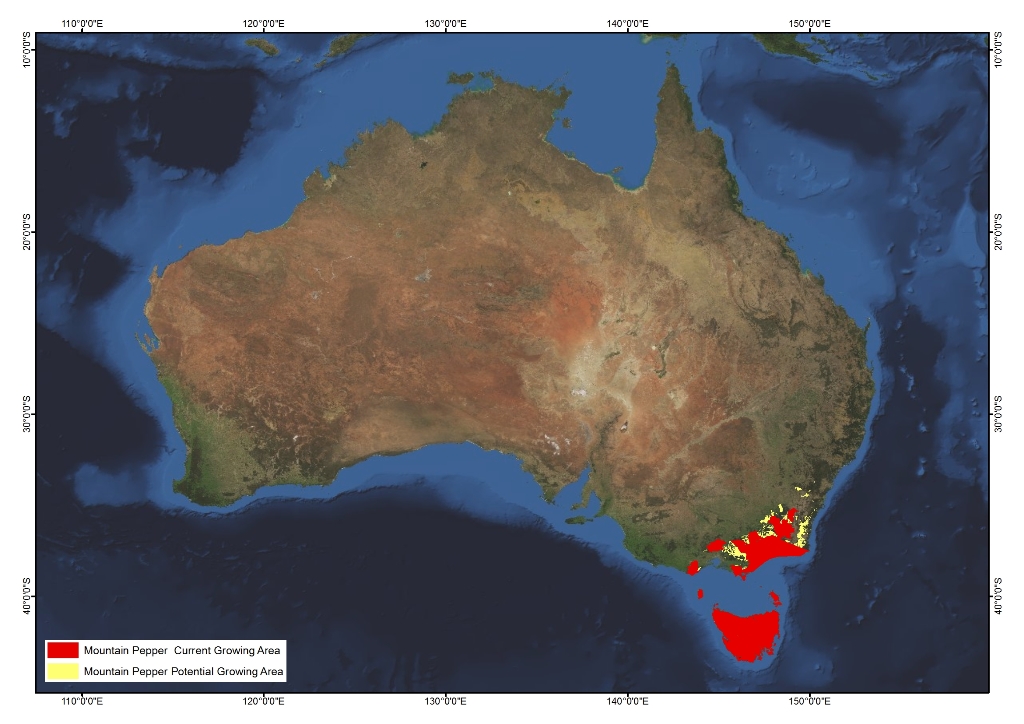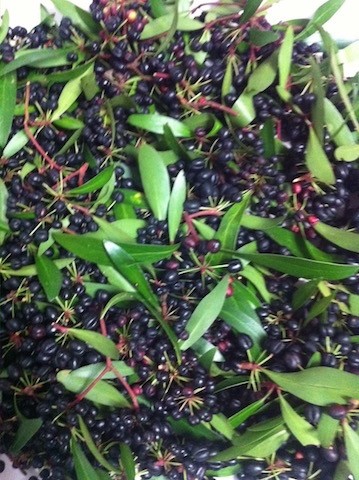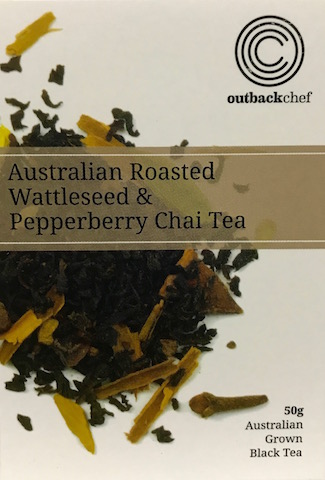Australian native pepper, Tasmannia lanceolata, has become increasingly popular in the past few years. They are an easy substitute for any of the usual imported white and black peppercorns currently available.
Plus they do have a unique flavour and aroma. Both berries and leaves are spicy & aromatic, they really do remind you of the Australian bush and a great addition to any kitchen pantry. Pepperberries and Pepperleaf are becoming more and more popular in the culinary industry as well as for medicinal use.
Some great recipes to try
Roasted Garlic with Pepperleaf
Avocado Dip with Desert Limes & Pepperberries
OutbackChef’s Bush BBQ Lemon Pepper has been one of the most popular of the OutbackChef range of mixed spices.
Roasted Wattleseed & Pepperberry Chai Tea
The leaf may be used fresh, but more often its used dried and milled. The small black berries, Pepperberries, can also be used fresh or dried, beware when using Pepperberries for the first time as they really do pack a “hot chilli punch”!!
Essential oils are now being extracted from the leaves and used as a food flavouring and for therapeutic purposes.
The vast majority of the leaves and berries are wild-harvested, some plantations are starting as demand is increasing.
The main ingredient of mountain pepper, polygodial, gives it very strong antimicrobial properties thus having the ability to be a natural food preservative, this compound is also responsible for the hot peppery flavour.
Australian native pepperberries are now exported worldwide and used by manufacturers to add a unique flavour to their food. Pepperberries are also used to add flavour to the Japanese Wasabi.
The early colonial settlers used both the pepperberries and pepperleaf as a substitute for Winter’s bark in treating ailments, it was also used for treating scurvy.
These trees make a great garden plant, they are bird attracting, especially Currawongs that love the berries. It can be propogated from cuttings and likes to grow in a well-drained acidic soil. The ideal cold climates of Tasmania and Southern Victoria are perfect for this plant where is likes the gullies and the moist areas.











Leave A Comment
You must be logged in to post a comment.